Imperial College London
Type of resources
Topics
Keywords
Contact for the resource
Provided by
Years
Formats
Representation types
Update frequencies
Scale
Resolution
-
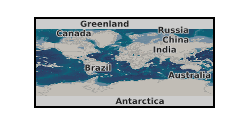
Data supporting 'Effective permeability tensors of three-dimensional numerically grown geomechanical discrete fracture networks with evolving geometry and mechanical apertures', submitted to the Journal of Geophysical Research: Solid Earth. Authors: Robin N Thomas (corresponding, robin.thomas11@imperial.ac.uk), Adriana Paluszny, Robert W Zimmerman. Department of Earth Science and Engineering, Imperial College London. Contents: For each GDFN, the geometry at each growth step. Additionally, for GDFN E, the data shown in the paper (aperture and flow distributions, figures 6 and 7) are provided, including the displacement for the mechanical case, and pressure distributions which were not shown in the manuscript. For the two SDFN sets, the geometry of the four datasets shown in figures 4 and 5 are provided. Notes: - The geometry files are provided in the .3dm format, Rhinocerous' native format (https://www.rhino3d.com/). A free trial of Rhinocerous can be used to explore the files, and can convert them to a range of other CAD file types. - VTK files can be viewed using free software such as Paraview (https://www.paraview.org/). These contain the meshes. - Fracture surface areas reported in the paper are derived from the mesh, rather than the geometry. The mesh approximates the geometry leading to a different surface area than those measured in the geometry (3dm) files. - The SDFN datasets are shown before trimming the parts of fractures which are outside the domain. These parts are trimmed when they are imported to ICGT.
-
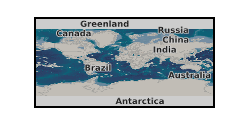
Data associated with the UKCCSRC thermal oxygen project - UKCCSRC-1-39, including rig design, reactor and burner design diagrams, heat transfer calculations for thermal oxygen, CuO-AI2O3 particles preparation procedure document, etc. Data is restricted.
-
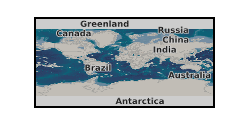
While chemical looping (combustion, CLC) is a promising technology for carbon capture, however many questions still remain as to its applicability at an industrial scale. In Chemical looping combustion a metal oxide is shuttled back and forth between a fuel and air reactor, picking up oxygen in the air reactor and transferring it to the fuel reactor. The fuel is never mixed with the nitrogen from the air, so a stream of CO2 and H2O is produced directly from the fuel reactor; this potentially makes the integrated power production and CO2 capture system highly efficient. Most CLC and CLOU schemes envisage using fluidised beds in which the solid fuel is intimately mixed with the oxygen carrier, or mixing of the solid fuel particles. This project aims to push forward chemical looping within the UK and integrates both experimental work and theoretical analysis to result in the first large-scale demonstration of CLC within the UK. Grant number: UKCCSRC-C1-39.
-
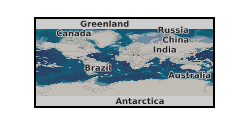
In this study, two strategies, thermal pretreatment and chemical doping, were investigated as a method of improving the residual carrying capacity of Longcliffe and Havelock limestone for calcium looping systems. Four parameters were varied during thermal pretreatment: temperature (900-1100 degrees C), time (3-12 hr), gas composition (0-100 % CO2 balanced in N2) and particle size (90-355 micrometre). After pre-calcination, the sorbents were subjected to 20 carbonation-calcination cycles performed in a thermographic analyser (TGA) to monitor any signs of sorbent improvement. The degradation of sorbent activity was modelled using the decay equation suggested by Grasa and Abanades (2006). Both Longcliffe and Havelock samples showed self-reactivation when pretreated under CO2, however this did not result in a greater carrying capacity after 20 carbonation/calcination cycles compared to the untreated limestone. For chemical doping, Longcliffe doped using 0.167 mol % HBr via quantitative wet impregnation method resulted in an increase in residual carrying capacity of 27.4 % after thermal pre-treatment under CO2 when compared to the untreated but doped limestone, assuming self-reactivation continued as modelled. When Longcliffe was doped and then pretreated under pure N2, the limestone showed self-reactivation, which was not seen in the undoped sorbent when also pretreated under N2. Thus, the success of pretreatment may be dependent on the chemical composition of the limestone. Finally, BET surface area and BJH pore volume analysis was used to understand the changes in the sorbents' morphologies. The closure of the mesopores (dpore<150 nm) after the pretreatment was correlated to the self-reactivation in the subsequent cycles.
-
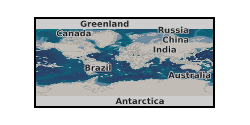
This presentation on the UKCCSRC Call 2 project Advanced Sorbents for CCS via Controlled Sintering was presented at the UKCCSRC Manchester Biannual Meeting, 13.04.2016. Grant number: UKCCSRC-C2-206.
-
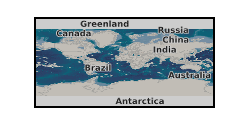
This poster on the UKCCSRC Call 2 project Advanced Sorbents for CCS via Controlled Sintering was presented at the CSLF Call project poster reception, London, 27.06.16. Grant number: UKCCSRC-C2-206. Calcium looping shows significant promise for CO2 capture. The process can lead to an energy penalty as low as 6 - 8 % including the compression of the lean CO2 stream, compared to 9.5 - 12.5 % for amine-based post-combustion capture. To implement this technology on an industrial scale, a large quantity of CaO-based sorbent will be required, therefore the sorbent must be capable of being regenerated and reused.
-
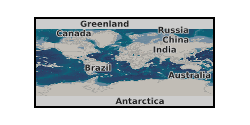
This poster on the UKCCSRC Call 2 project, Advanced Sorbents for CCS via Controlled Sintering, was presented at the Cardiff Biannual_10.09.14. Grant number: UKCCSRC-C2-206.
-
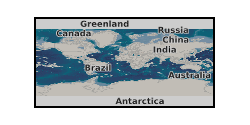
The data presented here contains the experimental X-ray CT dataset used for the paper "Characterising Drainage Multiphase flow in Heterogeneous Sandstones" by Jackson, Krevor et al (DOI 10.17605/OSF.IO/WCXNY), along with CMG IMEX modelling files. Core averaged pressure data and saturations, along with 1D saturation profiles are available in the supporting information fle. CT data is provided in the four '..._scans' folders. These contain reconstructed .dicom tomographs from X-ray CT imaging with native resolution 0.234375mm x 0.234375mm. The image thickness is 5mm for the Bentheimer and 3mm for the Bunter. Each files contains 3x scans for each fractional flow. Dry, water, brine equilibrated with CO2 (labelled SW), nitrogen and CO2 background scans are also provided, which are obtained after single phase core flooding. CMG IMEX .dat files contain the necesary input files for CMG IMEX to run the numerical core flood simulations (the low flow rate core flood examples are included). These have associated .inc files for the 3D capillary pressure scaling (the end point of the capillary pressure curve at irreducible water saturation) and the 3D porosity map. These are read into the simulation files on execution. The porosity and capillary pressure files are for the final, full length rock cores used to produce the main figures in the paper (Figure 5 onwards). The outputs from the CMG IMEX simulation can be read into the 3D results viewer where 3D saturations and pressure drops are obtained. This work was funded by the Natural Environment Research Council (Grant number: NE/N016173/1).
-
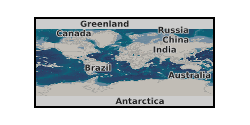
The project is mainly experimental in nature. Sieved samples of a variety of UK, Canadian and Spanish limestones will be pre-calcined and sintered at elevated temperatures to differing extents under various steam atmospheres, potentially with the addition of salts. The relativities of the produced materials will be tested, initially in a thermogravimetric analyser and subsequently in a small electrically-heated fluidised bed. If time allows, extended work will be conducted at elevated pressure (10 - 20 bar), more typical of conditions in pre-combustion capture. In essence, the aim of the project is to develop inexpensive sorbents for CO2 to work within an efficient thermodynamic cycle. Grant number: UKCCSRC-C2-206.
-
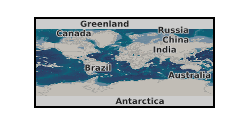
Grant: NE/N016173/1.The data presented herein comprises raw and segmented X-Ray micro-CT data, CMG simulation files and Matlab processing files for the paper 'Representative elementary volumes, hysteresis and heterogeneity in multiphase flow from the pore to continuum scale'. The data is organised as Core 1 and Core 2 respectively. Full core scans are obtained at a resolution of 6 microns. Region of interest (ROI) scans are obtained at 3.45 micron and 2 micon (core 1) and 3.5 micron (core 2). Resolution information is contained within the file names. Voxel sizes in the image files can be changed to match these values. Experimental post-processing files contain the upscaled saturations and porosity values in 3D, which are used in the paper. It also contains the pore-filling analysis. The CMG simulation files contain the input deck, 3D digitial core information (porosity, capillary pressure) needed to simulate both the drainage and imbibition core floods, with corresponding Matlab analysis files. These are Bentheimer outcrop cores obtained from Shell, Amsterdam. It is a shallow marine rock, deposited during the Lower Cretaceous. It outcrops between Enschede and Schoonenbeek in the Netherlands.
 NERC Data Catalogue Service
NERC Data Catalogue Service